
Cactus Around Las Vegas, Vegetation Around Las Vegas
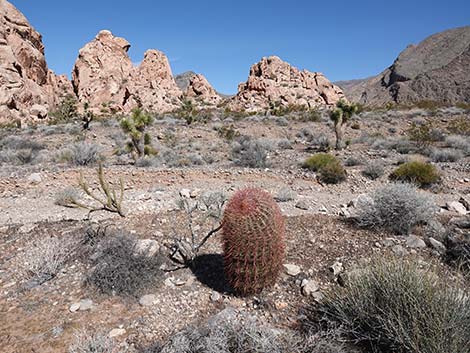 Three sentinels watching over Red Rock Canyon NCA) |
General: California Barrel Cactus (Ferocactus cylindraceus) are large, round, barrel-shaped cactus with ribs (flutes) running from bottom to top. Barrel cactus start out short and wide (globular), then grow to about 5-ft tall and 16 inches in diameter. The plants are covered with relatively long, stout, flattened red spines. These outer spines are erect and spreading, and the longest are recurved. Beneath these spines, white radial spines grow from around the base of the main spines and hug the body of the cactus. Yellow flowers form a ring around the top of the stem. Barrel cactus most often occur in rocky places and cliffs in the Upper Sonoran (Mojave Desert Scrub and Pinyon-Juniper Woodland) life zone, although they can be found on bajadas below cliffy areas. One of the best places to see Barrel Cactus around Las Vegas is on Fossil Hill at Red Rock Canyon NCA. Barrels are generally uncommon cactus of rocky hillsides, but they can be locally abundant. Family: Cactus (Cactaceae). Other Names: Compass cactus, barrelcactus. |
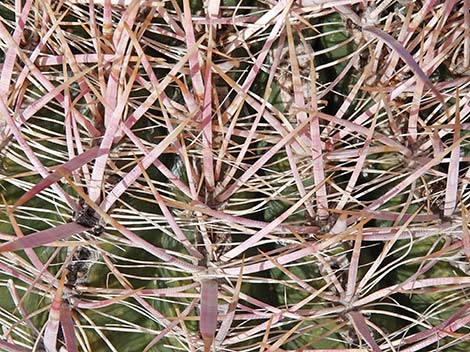 Barrel cactus spines (central and radial) |
Plant Form: Single, stout, upright stem. Young plants are globular (short and wide). Height: To 5-ft tall and 16 inches in diameter. Trunk: None. Stem: Single, unbranched. Stem Surface: Fluted (ribs) running from bottom to top, otherwise smooth. Spines: Main spines are long, stout, flattened, curving, and reddish. Radial spines (smaller spines around the base of the main spines) present. Glochids: None. Flowers: Blooms in late spring and early summer. Inflorescence: single flowers near the top of the stem, forming a ring around the top. Flowers: all parts yellow, about 1-1/2 inches diameter. |
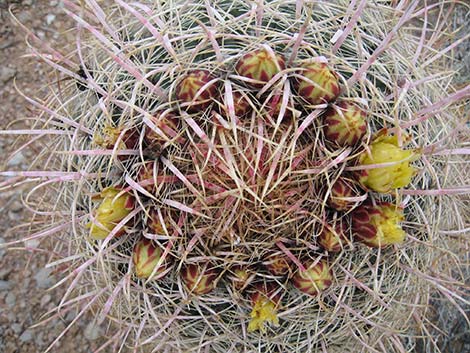 Flowers form in a ring around the top of the stem |
Fruit: Fleshy yellow fruit that dries to brown. Seeds: Black, many contained in each fruit. Habitat: Most common in rocky areas and on cliffs, also found on bajadas. Distribution: California to Utah, and south into Mexico. Elevation: To about 4,500 ft. Comments: Desert rodents and birds eat the fruits. People often think that they can hack into a barrel cactus and get good drinking water. This is not true. While there is moisture inside the cactus, the effort needed to hack in and get the bitter liquid is not worth it. |
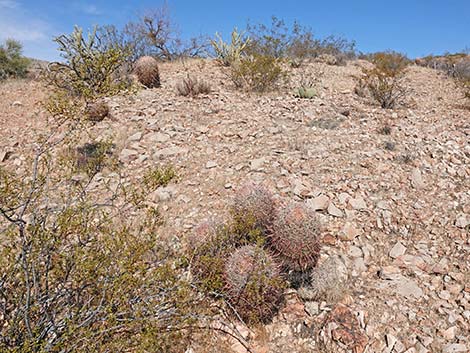 Typical (single stem) and atypical (multiple stem) Barrel Cactus |
Comments: Barrel Cactus sometimes grow in clumps like Cottontop Cactus, and without careful inspection, even experts can misidentify them. Cottontop Cactus can be identified by the presence of wool on the top of the plant and on the fruits, while California Barrel Cactus does not have wool. Furthermore, the flowers and fruits of Cottontop Cactus emerge from the tips of the stems, while those of California Barrel Cactus form a broad ring around the top of the stem. In addition, California Barrel Cactus has radial spines (smaller spines around the base of the main spines), while Cottontop Cactus do not. |
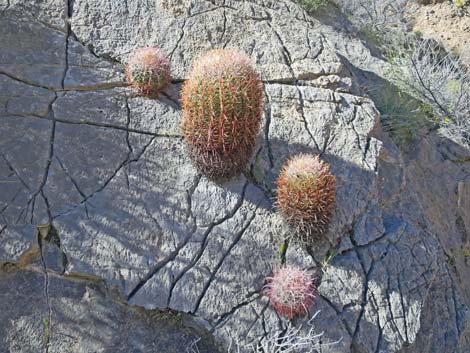 California barrel cactus family in Gold Butte National Monument |
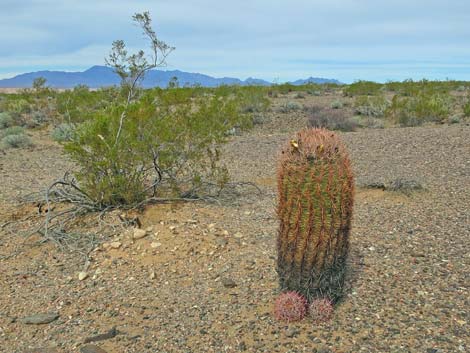 California barrel cactus with pups in Gold Butte National Monument |
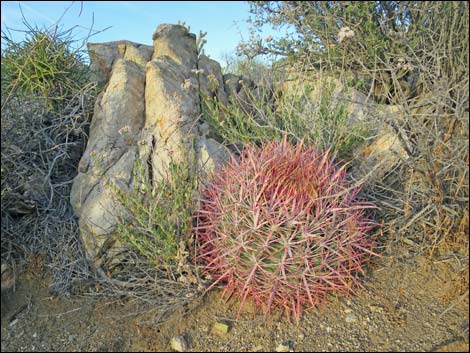 Small barrel cactus in Gold Butte National Monument |
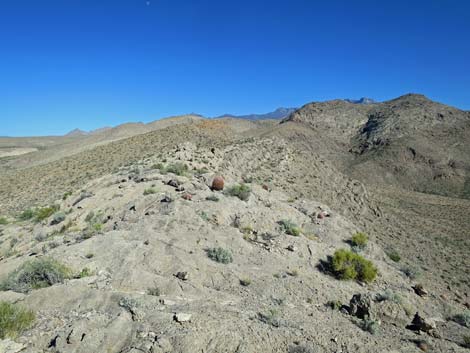 California barrel cactus habitat in Gold Butte National Monument |
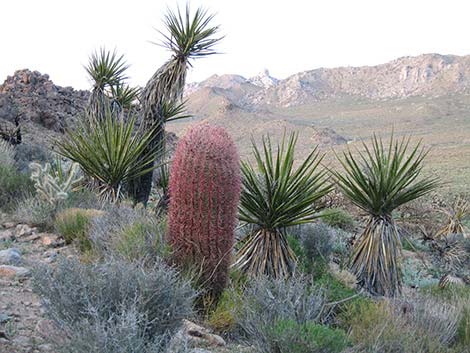 Five-foot tall specimen (Mojave National Preserve) |
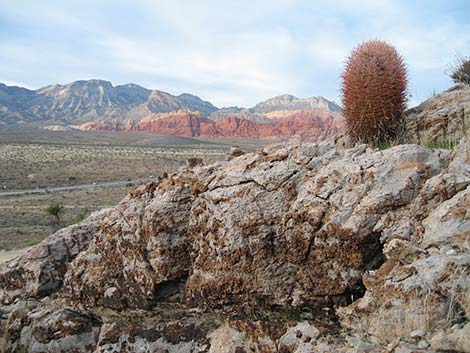 Barrel cactus on limestone outcrop overlooking Red Rock Canyon NCA |
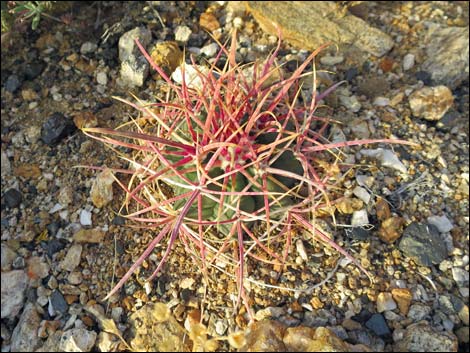 Young barrel cactus |
 Young plant (South McCullough Wilderness Area) |
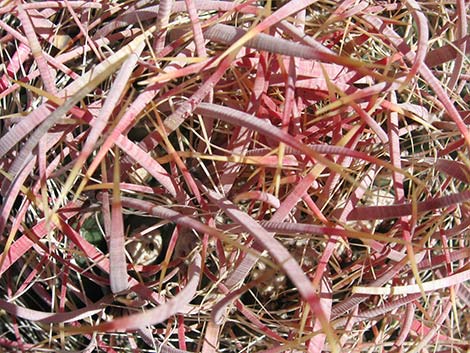 Barrel Cactus spines are red, flattened, and grow on the ridges |
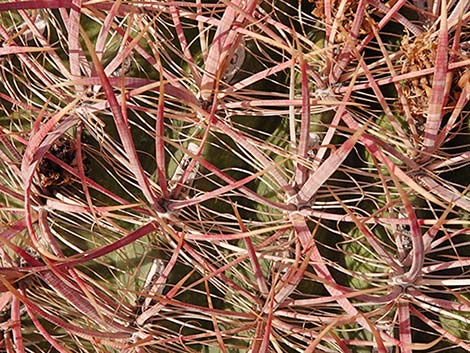 Central spines red; radial spines white |
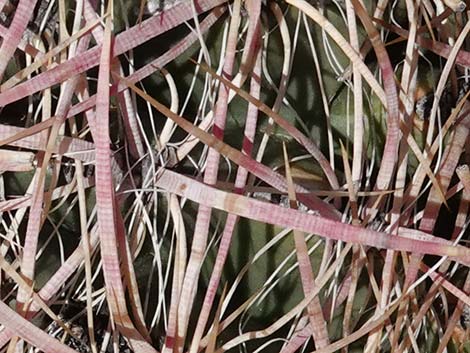 Radial spines present (white spines under the main spines) |
 Radial spines present (white spines under the main spines) |
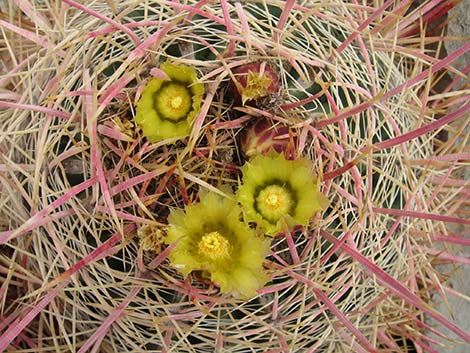 Flowers |
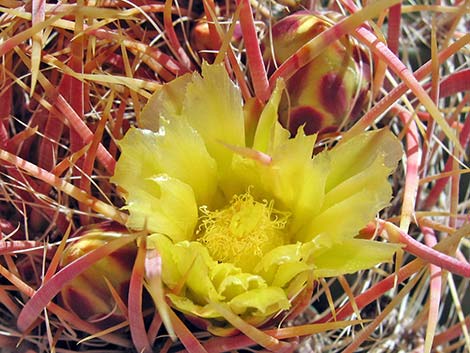 Flower and two buds |
 California barrel cactus flower |
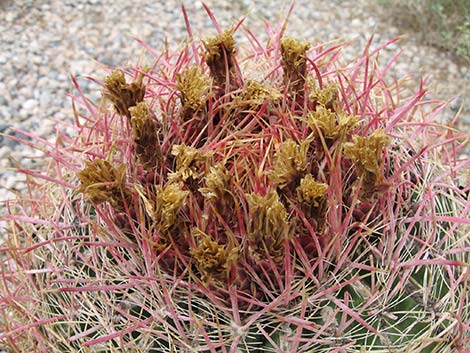 Dry fruits atop a cactus |
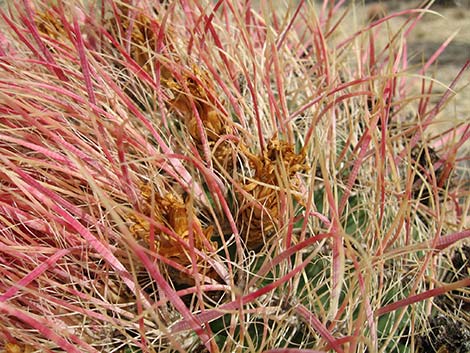 Dry fruits atop a cactus |
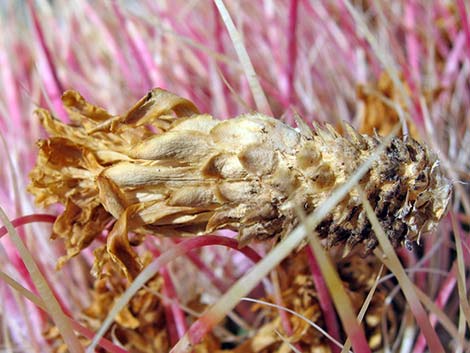 Individual dry fruit, perhaps pulled out by a rodent (top to the left) |
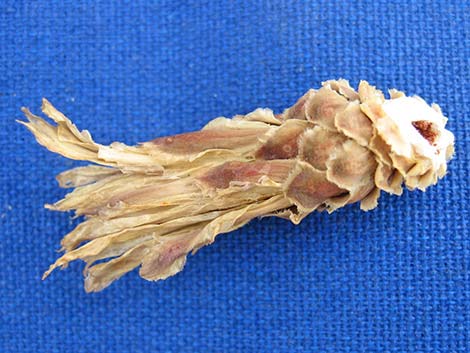 Dried barrel cactus fruit |
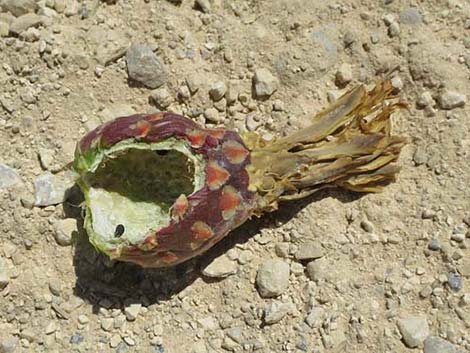 A fresh fruit eaten by a rodent (but one seed was left behind) |
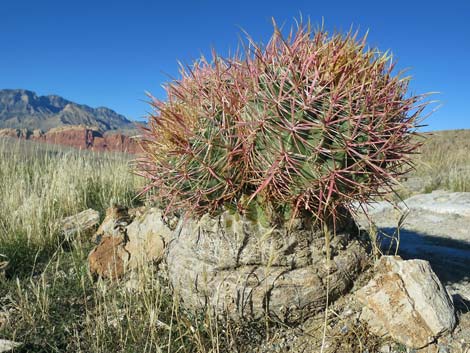 Recovering fire-damaged barrel cactus |
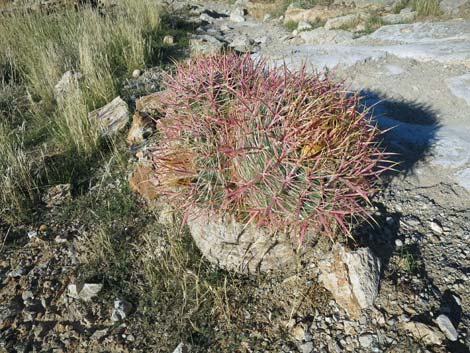 Recovering fire-damaged barrel cactus |
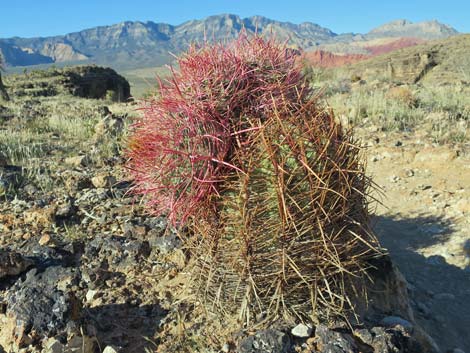 Recovering fire-damaged barrel cactus |
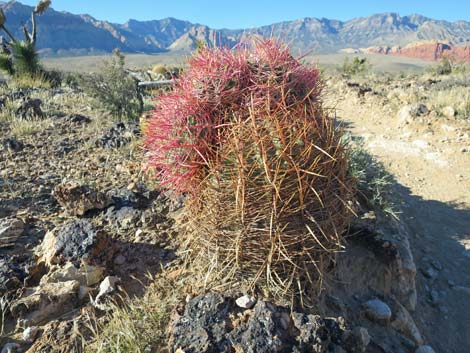 Recovering fire-damaged barrel cactus |
 Recovering fire-damaged barrel cactus |
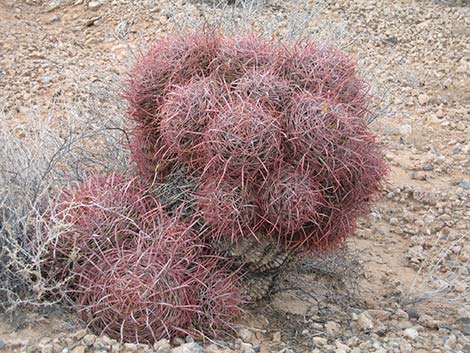 This unusual barrel cactus looks like a Cottontop Cactus |
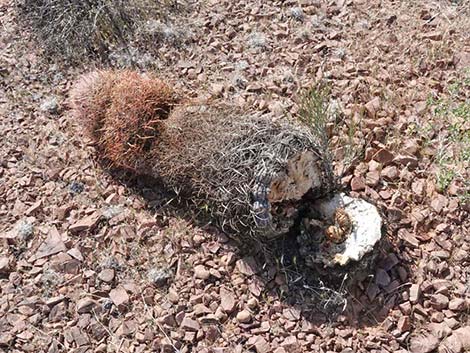 Broken Barrel Cactus reveals the interior |
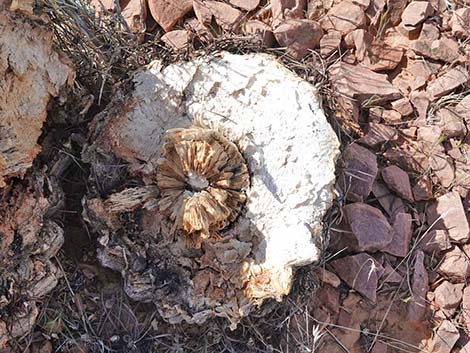 Barrel Cactus interior: no water to find here |
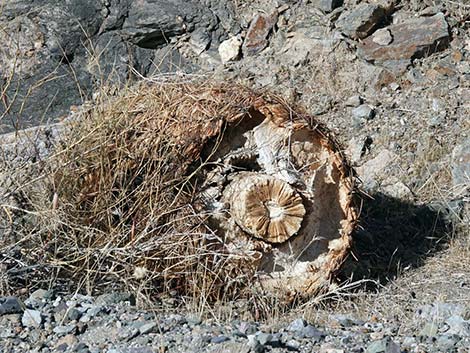 Barrel Cactus interior: no water to find here |
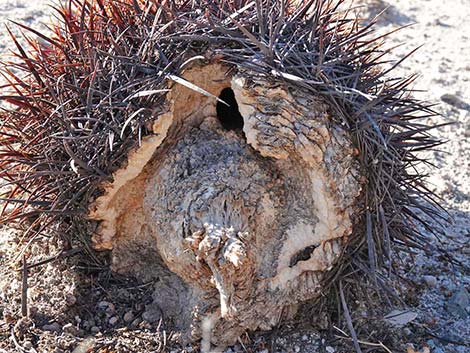 Barrel Cactus interior: no water to find here |
Note: All distances, elevations, and other facts are approximate. Names generally follow the
USDA database.
![]() ; Last updated 240615
; Last updated 240615
| All Cactus | Plant Species Index | Glossary | Copyright, Conditions, Disclaimer | Home |